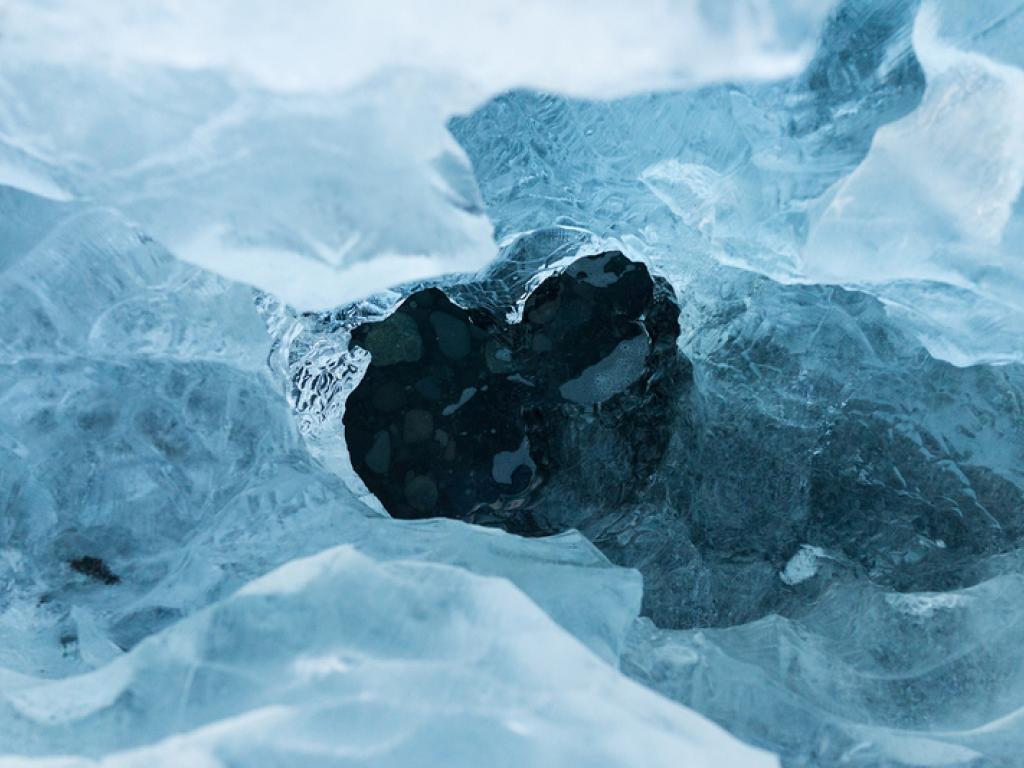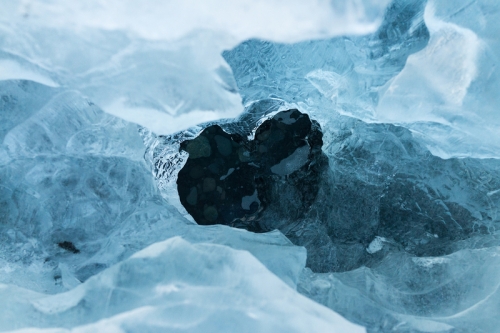Life in the ice in a warmer Arctic


The impact of climate change on the algae that live in Arctic sea ice is likely to be large and complex, according to models co-developed by UCT.
Recent research by an international team, involving the University of Cape Town (UCT), investigated how a future, warmer Arctic could impact the algae that live in sea ice – and form the base of the marine food web there. To do this, the team used modelling to predict how growth of sea-ice algae could change as our climate does.
Their findings show that the impact of declines in sea ice on sea-ice algae – and the rest of the food web – in the Arctic is likely to be drastic and complex across the region.
Life inside the ice
Phytoplankton are tiny algae that float in the oceans. Like plants, they are primary producers that form the base of the food web and can transform carbon dioxide into oxygen. Though microscopic, they are vital to life in the oceans.
Sea-ice algae – or sympagic algae – are phytoplankton that live inside sea ice. Like phytoplankton, they can photosynthesise. Unlike phytoplankton, they live in the limited, tiny spaces provided by channels and pockets of brine within sea ice – rather than open water.
In the Arctic, sea-ice algae play an important part in supporting the food web at times of the year when light is low and there is still ice cover.
“The short and tightly connected Arctic food web is heavily dependent on sea-ice algae as a source of organic matter. How much is not completely known.”
“The short and tightly connected Arctic food web is heavily dependent on sea-ice algae as a source of organic matter. How much is not completely known,” explains Associate Professor Marcello Vichi from the UCT Department of Oceanography who co-authored the study. “Ecologists have different hypotheses on what would happen to the food web in a warming Arctic.”
It’s complicated
Vichi and his colleagues – Dr Letizia Tedesco, a senior researcher from the Marine Research Centre of the Finnish Environment Institute, and Enrico Scoccimarro, a senior researcher at the Euro-Mediterranean Centre on Climate Change in Bologna, Italy – aimed to contribute to this gap in knowledge using models to investigate how declines in sea ice in the Arctic could impact sea-ice algae.
To do this, they combined a model of sea-ice algae growth with climate models resulting from a business-as-usual climate change scenario. Mathematical models are essential for understanding changes happening in the Arctic ecosystem – before we run out of time.
“Given the practical complexity of collecting data on this hidden ecosystem in the ice, there is limited information on spatial distributions and seasonal behaviour,” says Vichi. “We do not have methods that allow us to collect data on the sea-ice algal ecosystem from space – as we do for phytoplankton in the ocean, for example.
The climate models projected similar thinning of snow and sea ice and shortening of the ice season at all latitudes in the future Arctic. The response of the sea-ice algae was more complex and varied from north to south across the region.
The only way to measure algae in ice is to manually drill holes and extract cores. Think about doing that for the entire Arctic for every season of sea ice!
“To gather enough data to completely validate our model results, we would probably need 20 to 30 years, and we do not have that much time. We need to act before that and take decisions under uncertain conditions.”
Less ice, more algae?
The climate models projected similar thinning of snow and sea ice and shortening of the ice season at all latitudes in the future Arctic. The response of the sea-ice algae was more complex and varied from north to south across the region.
The University of Cape Town's departments of oceanography, chemical and civil engineering have teamed up to study sea ice under the Marine Research Institute.
Furthest from the pole, the model projected that the thinning of snow cover would be so pronounced that the sea-ice algae would bloom very early – due to the increase in light. This would mean more algae growing, but the greatly reduced area of sea-ice would limit its accumulation.
Closer to the pole, the model showed little change in the growth and accumulation of sea-ice algae despite the much earlier onset of the algal bloom. This is because of the earlier onset of the ice melt too, which narrows the length of the algae’s growing season.
The diverse responses of sea-ice algae show that the impact of climate change on primary production in the region will likely to be complex – as will be the cascading impact on the rest of the food web, from fishes to whales, seals to polar bears.
And in the region closest to the pole, the model predicted that the bloom timing would shift from fall to summer – a more light-favourable time of the year – causing the largest increase in primary production.
Overall, their model suggested a 52% increase in primary production by sea-ice algae in the Arctic during this century.
From producers to predators
The diverse responses of sea-ice algae show that the impact of climate change on primary production in the region will likely to be complex – as will be the cascading impact on the rest of the food web, from fishes to whales, seals to polar bears.
“Even if the models are imperfect – which they are by definition! – and a faint approximation of the complexity of biological processes, they still provide us with the possibility to benchmark scenarios and expand the conceptual predictions of field ecologists,” says Vichi.
Sea-ice studies at UCT
Recognising the crucial role of the ocean and sea ice in the world’s climate, UCT researchers from across departments are working together to take advantage of our position at edge of the Southern Ocean and near Antarctica to study the ice there. Antarctic sea ice undergoes the largest seasonal cycle of ice on Earth and could provide “a boosted version of what the Arctic may look like at the end of the century,” explains Vichi.
“We hope that in the future – for the first time – there will be a transfer of knowledge from south to north in a field that is traditionally dominated by the global north.”
“We are developing a research team for sea-ice studies that brings together the modelling expertise with the fieldwork, especially to operate in a remote and harsh environment like the Southern Ocean.”
Researchers in the departments of oceanography and chemical, civil and electrical engineering have teamed up under the Marine Research (Ma-Re) Institute, which Vichi is director of.
“We hope that in the future – for the first time – there will be a transfer of knowledge from south to north in a field that is traditionally dominated by the global north.”
- Tedesco L, Vichi M, Scoccimarro E (2019) Sea-ice algal phenology in a warmer Arctic. Science Advances 5(5): eaav4830. DOI: 10.1126/sciadv.aav4830
Story: Staff Writer
Photo: Jared Erondu, Unsplash